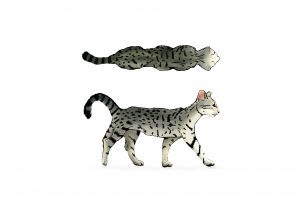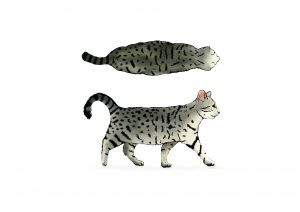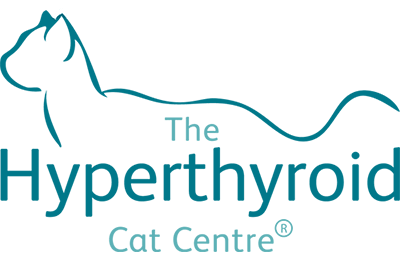Body Condition Score
What is it?
You may have heard your vet speak about your cats’ Body Condition Score (BCS). This is simply a way of using an objective measurement to tell whether your cat is overweight, underweight or just the right weight.
What shape should my cat be?
Weighing scales are very good at giving a precise number but offer no guidance on whether it is an appropriate weight for an individual. The BCS is a very good way at estimating whether a cat is of the right shape but offers no guidance to what the weight is. Using both measures together is the most helpful. Below is a Body Condition Score chart; numbers 2, 4, 6 and 8 are half-way points between the odd numbers.
Hyperthyroid cats tend to lose muscle mass before fat and in the early stages of their disease this may be the first change in body shape. A good place to feel for this is along the back between the pelvis and the last ribs; the boney prominences may feel unusually obvious even though the overall body shape suggests a higher BCS.
BCS 1

BCS 1 – many hyperthyroid cats lose weight and become very thin if the condition is not treated.
1. Very thin. It is as if every bone is clearly felt and on short-haired cats the ribs can be seen clearly. From the side the abdomen is severely ‘tucked-in’, whilst from above they have an hour-glass shape because the abdomen is so empty. The face appears gaunt and haggard.
BCS 3

BCS 3 – underweight hyperthyroid cat
3. Underweight. Boney prominences over the pelvis, and the ribs, are felt easily without requiring pressure because there is only a thin fat layer. The tucked-in abdomen and hourglass shape is still noticeable but less clearly than 1.
BCS 5

BCS 5 – normal weight, though may still be hyperthyroid depending on other symptoms.
5. Normal. Boney prominences over the pelvis, and the ribs, are felt through a moderate layer of fat. There is still an abdominal tuck and from above there is still a clear waist behind the ribs. The face appears well-proportioned.
BCS 7

BCS 7 overweight cat – unlikely to be hyperthyroid, but may be in the early stages of the disease, particularly if obese previously
7. Overweight. Boney prominences over the pelvis, and the ribs, are difficult to feel through the fat layer without firm pressure being applied. An abdominal tuck is no longer visible because the abdomen and the fat pad beneath it is starting to sag. From above the waist is obscured by a broadening behind the ribs.
BCS 9

BCS -9 obese cat – unlikely to be hyperthyroid, but the excess weight carries a number of other health implications.
9. Obese. Boney prominences over the pelvis, and the ribs, are hidden and almost impossible to feel through a thick layer of fat. Instead of an abdominal tuck a large pendulous abdomen and fat pad beneath it sags and from above the waist is replaced by a bulging profile. The face appears chubby.
BCS Action Key:
Urgent veterinary advice
and treatment required.
Adjust diet and monitor
the response; seek
veterinary advice.
No change required but
continue to monitor.

